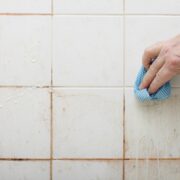Weighted blankets are a popular tool for promoting relaxation and reducing anxiety. They work by providing a gentle, comforting pressure that simulates a hug or swaddle, which can help to soothe the nervous system and promote feelings of calm. But in order to keep your weighted blanket in good condition and ensure that it continues to provide these benefits, it’s important to clean and care for it properly.
Here are a few tips for cleaning and caring for your weighted blanket.
How to Clean a Weighted Blanket?
- Check the label on the blanket for any specific care instructions provided by the manufacturer. Some weighted blankets may be machine-washable, while others may need to be hand-washed or dry-cleaned.
- If the blanket is machine-washable, use a gentle cycle with cold water and a mild detergent. Avoid using bleach or fabric softener.
- If the blanket needs to be hand-washed, use a mild detergent and cold water. Soak the blanket for 15-20 minutes, then gently agitate it to release any dirt or stains. Rinse the blanket thoroughly and press out as much water as possible.
- If the blanket is too heavy to be washed by hand, consider taking it to a professional cleaner who has experience cleaning weighted blankets.
- Once the blanket is clean, lay it flat to dry. Do not wring out the blanket or put it in the dryer. The weight of the blanket could cause damage to the filling or the stitching.
- Once the blanket is dry, fluff it up to redistribute the filling and restore its shape.
It’s also important to note that it’s recommended to avoid folding the weighted blanket, as this can compress the filling and cause it to become unevenly distributed. Instead, store it flat or hung up.
Additionally, you can use a duvet cover to protect the weighted blanket and make it easier to clean. You can wash the duvet cover as needed, leaving the weighted blanket inside.
Overall, it is important to follow the specific care instructions provided by the manufacturer to ensure the longevity and effectiveness of your weighted blanket.
How Often to Clean a Weighted Blanket
The frequency of cleaning a weighted blanket depends on several factors, including how often it’s used, the type of fabric it’s made of, and whether or not it’s been exposed to spills or other stains.
As a general rule, it’s recommended to clean a weighted blanket every three to six months, or more frequently if it’s exposed to spills or other stains. However, if it’s used by an individual with allergies or asthma, it’s recommended to clean it more often.
It’s also a good idea to clean a weighted blanket before storing it for an extended period of time to prevent any odors or stains from setting in.
You can also use a duvet cover to protect the weighted blanket, which will make it easier to clean. You can wash the duvet cover as needed, leaving the weighted blanket inside.
It’s important to note that if you notice any unusual odors, it’s time to clean your blanket. Additionally, if you notice any lumps or bumps in the blanket, it may be time to redistribute the filling.
Overall, it’s a good practice to check your weighted blanket from time to time and look for any signs of wear or tear, or any other issues that may require cleaning or repairs.
How to Handwash Your Weighted Blanket
Handwashing a weighted blanket can be done in the following steps:
- Fill a bathtub or large basin with cold water and add a mild detergent. Avoid using bleach or fabric softener, as they can damage the blanket or affect its weight distribution.
- Submerge the blanket in the water and use your hands to gently agitate it. This will help release any dirt or stains from the blanket.
- Soak the blanket for 15-20 minutes, then gently agitate it again to ensure that all of the dirt and stains have been removed.
- Rinse the blanket thoroughly with cold water to remove all traces of detergent. Press out as much water as possible.
- If the blanket has any stains that don’t come out with the initial wash, spot-treat them with a mild detergent before washing the blanket again.
- Once the blanket is clean, lay it flat to dry on a clean surface or towel. Do not wring out the blanket or put it in the dryer. The weight of the blanket could cause damage to the filling or the stitching.
- Once the blanket is dry, fluff it up to redistribute the filling and restore its shape.
Note: It’s recommended to use two people to handwash a weighted blanket, as it can be heavy and difficult to maneuver.
It’s important to always check the care instructions provided by the manufacturer before attempting to wash your weighted blanket, as some blankets may have different recommendations. Additionally, it’s recommended to spot clean as soon as possible if a spill occurs, rather than waiting for the next wash cycle.
Overall, handwashing a weighted blanket can be a bit more time-consuming than simply throwing it in the washing machine, but it will help to ensure that the blanket retains its shape and weight distribution, which will ultimately prolong its lifespan.
How to Dry Your Weighted Blanket
- Once the blanket has been washed and rinsed, gently press out as much water as possible. Do not wring out the blanket, as this can damage the filling or the stitching.
- Lay the blanket flat on a clean, dry surface or towel. Avoid hanging the blanket to dry, as the weight of the wet blanket could cause stretching or damage.
- Allow the blanket to air dry completely. This may take a few hours to a full day, depending on the humidity and temperature of the room.
- Once the blanket is dry, fluff it up to redistribute the filling and restore its shape.
- Fold the blanket and store it in a clean, dry place. Avoid compressing the blanket by folding or stacking it, as this can cause the filling to become unevenly distributed.
It’s important to note that it’s not recommended to use a dryer to dry a weighted blanket, as the heat and tumbling can damage the filling and stitching. Additionally, some weighted blankets may require air dry only, so it’s important to check the manufacturer’s instructions before attempting to dry your blanket.
It’s also a good idea to check the blanket periodically during the drying process to make sure it’s not developing any mold or mildew. If you notice any signs of mold or mildew, you may need to wash the blanket again and dry it in a well-ventilated area.
Overall, it’s important to dry your weighted blanket correctly to ensure its longevity and effectiveness. Air drying is the best option to prevent damage to the blanket.
Tips to Keep Your Weighted Blanket Clean Longer
Here are some tips to help keep your weighted blanket clean for longer:
- Use a duvet cover: A duvet cover can protect your weighted blanket from spills and stains and make it easier to clean. You can wash the duvet cover as needed, leaving the weighted blanket inside.
- Spot clean immediately: If a spill or stain occurs, spot clean it as soon as possible. The longer a stain sits, the harder it will be to remove.
- Rotate the blanket: Rotating your weighted blanket can help distribute wear and tear evenly, which will prolong its lifespan.
- Keep it away from pets and food: Pets and food can be sources of spills and stains, so try to keep your weighted blanket away from these areas.
- Store it properly: When not in use, store your weighted blanket in a clean, dry place. Avoid compressing the blanket by folding or stacking it, as this can cause the filling to become unevenly distributed.
- Don’t use it for sleeping if you are sick: If you are feeling ill, it’s best to avoid using your weighted blanket as it may increase the chances of transferring germs.
- Don’t use it with pets: Pets can also transfer germs and hair, it is better not to use it with them.
- Regularly check it: Regularly check your weighted blanket for any signs of wear and tear, odors, or any other issues that may require cleaning or repairs.
By following these tips, you can help keep your weighted blanket clean for longer, which will prolong its lifespan and ensure that it remains effective. Remember, always check the care instructions provided by the manufacturer before attempting to clean or maintain your weighted blanket.








